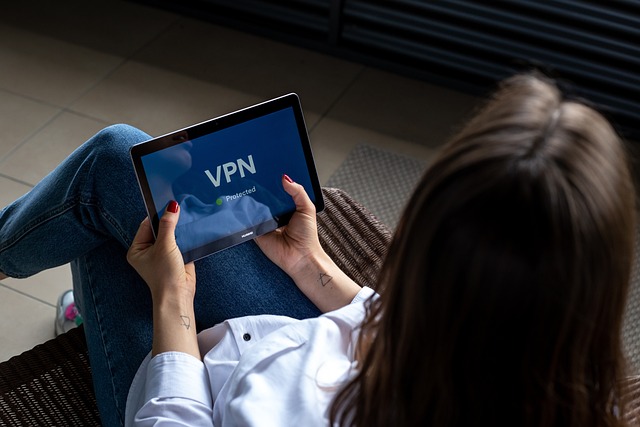Are you curious about how to hack WiFi passwords? In today’s digitally connected world, where the internet is our lifeline, the idea of gaining access to a secured WiFi network can be quite tempting. You might wonder if it’s even possible, and if so, how can it be done? Well, in this article, we will delve into the intricacies of WiFi hacking and provide you with valuable insights into this subject. So, are you ready to unlock the secrets of WiFi password hacking?
In a nutshell, hacking a WiFi password involves deciphering the security measures put in place to protect a wireless network. It’s essential to understand that this knowledge should only be used for legitimate purposes, such as retrieving your own forgotten password or securing your network against potential threats. Now, let’s get to the point – to hack a WiFi password, you need to exploit vulnerabilities in the network’s security protocols. While it may sound complex, it’s a process that can be broken down into manageable steps, and we’ll guide you through them in this article.
But these are not the only aspects we’ll explore in this comprehensive guide. We’ll also discuss the legal and ethical implications of WiFi hacking, provide tips to safeguard your network, and share insights from cybersecurity experts. So, without any further ado, let’s embark on this journey into the world of WiFi password hacking, ensuring that you have the knowledge to protect your network and use it responsibly.

Understanding the Basics Of How to Hack WiFi Passwords Cracking
Before diving into the specific techniques, it’s essential to understand the fundamentals of WiFi password cracking. WiFi networks are secured using encryption protocols such as WEP (Wired Equivalent Privacy), WPA (Wi-Fi Protected Access), and WPA2 (Wi-Fi Protected Access II). These protocols aim to protect the confidentiality and integrity of the data transmitted over the network.
- WEP Cracking: WEP was the initial security protocol for WiFi networks but is now considered weak and easily crackable. Hackers can exploit vulnerabilities in the WEP protocol to recover the password using tools like Aircrack-ng.
- WPA/WPA2 Cracking: WPA and WPA2 are more secure than WEP but can still be vulnerable to attack. Hackers commonly use brute-force attacks, dictionary attacks, or methods like the Pixie Dust attack to crack WPA/WPA2 passwords.
Now, let’s explore some of the techniques hackers employ to crack WiFi passwords.
Method 1: Windows Commands to Retrieve WiFi Passwords
If you have previously connected to a WiFi network using a Windows device, you can recover the password from the system’s stored profiles. Follow these steps:
- Open a Windows Command Prompt with administrative privileges by searching for “cmd” in the Start Menu and selecting “Run as administrator.”
- Enter the command “netsh wlan show profile” to display a list of all the WiFi profiles saved on the computer.
- Identify the network you want to retrieve the password for and copy its name.
- Enter the command “netsh wlan show profile name=”NETWORKNAME” key=clear” (replace “NETWORKNAME” with the actual network name) to reveal the password under “Key Content.”
Method 2: Resetting the Router
Resetting the router is an option only if you have physical access to it. However, it is important to note that this method is meant for personal use and should not be used to gain unauthorized access to others’ networks. Here’s how you can reset your router:
- Locate the reset button on your router. It is usually a small, recessed button that can be pressed with a pen or unfolded paperclip.
- Press and hold the reset button for about 10 seconds until the router’s lights blink or turn off and on.
- After the router has been reset, you will need to log in to its settings using a web browser. Refer to the router’s manual or visit RouterPasswords.com to find the default username and password.
- Once logged in, you can change the WiFi password to a new, secure one.
Method 3: Cracking WiFi Passwords Using Tools
Hackers often leverage specialized tools and software to crack WiFi passwords. These tools utilize various techniques, including brute-force attacks, dictionary attacks, and exploiting vulnerabilities in WiFi protocols. Here are some popular tools used by hackers:
- Aircrack-ng: Aircrack-ng is a suite of tools used to assess WiFi network security. It can crack both WEP and WPA-PSK keys by capturing and analyzing network packets. Aircrack-ng requires a WiFi adapter that supports packet injection for successful attacks.
- Reaver:Reaver is a tool specifically designed to crack WPS-enabled WiFi networks. It exploits vulnerabilities in the WPS protocol to recover the password. However, its success depends on the strength of the network’s signal and the presence of WPS.
- Hashcat: Hashcat is a powerful password recovery toolthat supports multiple attack modes, including dictionary attacks, combinator attacks, and brute-force attacks. It can be used to crack WiFi passwords by leveraging the computing power of modern GPUs.

Staying Secure and Protecting Your WiFi Network
While it’s important to understand how hackers crack WiFi passwords, it’s equally crucial to prioritize the security of your own network. Here are some tips to protect your WiFi network:
- Change Default Credentials: Always change the default username and password of your router to prevent unauthorized access.
- Use Strong Encryption: Ensure that your WiFi network is using the latest encryption protocols, such as WPA2 or WPA3, to secure your data.
- Enable MAC Filtering: MAC filtering allows you to specify which devices can connect to your network based on their MAC addresses. Add only trusted devices to the allowed list.
- Regularly Update Firmware: Keep your router’s firmware up-to-date to patch any security vulnerabilities.
- Use Strong Passwords: Create strong, unique passwords for your WiFi network and other online accounts. Use a combination of letters, numbers, and special characters.

Remember, hacking into someone else’s WiFi network without permission is illegal and unethical. Always respect the privacy and security of others. If you encounter any suspicious activity or believe your WiFi network has been compromised, seek professional assistance from reputable cybersecurity experts.
Conclusion
Understanding how hackers hack WiFi passwords can help you better protect your own network from potential threats. By following best practices for WiFi security, such as using strong passwords and keeping your router firmware up to date, you can significantly reduce the risk of unauthorized access. Remember to always use your knowledge ethically and responsibly, and prioritize the privacy and security of others’ networks.
For more information on WiFi security and cybersecurity services, visitSpy Wizards and learn how they can assist you in securing your digital assets and networks.
Disclaimer: This article is for informational purposes only. The techniques and tools mentioned should not be used for illegal activities or to compromise the privacy and security of others. Always seek proper authorization and adhere to legal and ethical guidelines when accessing or securing WiFi networks.
